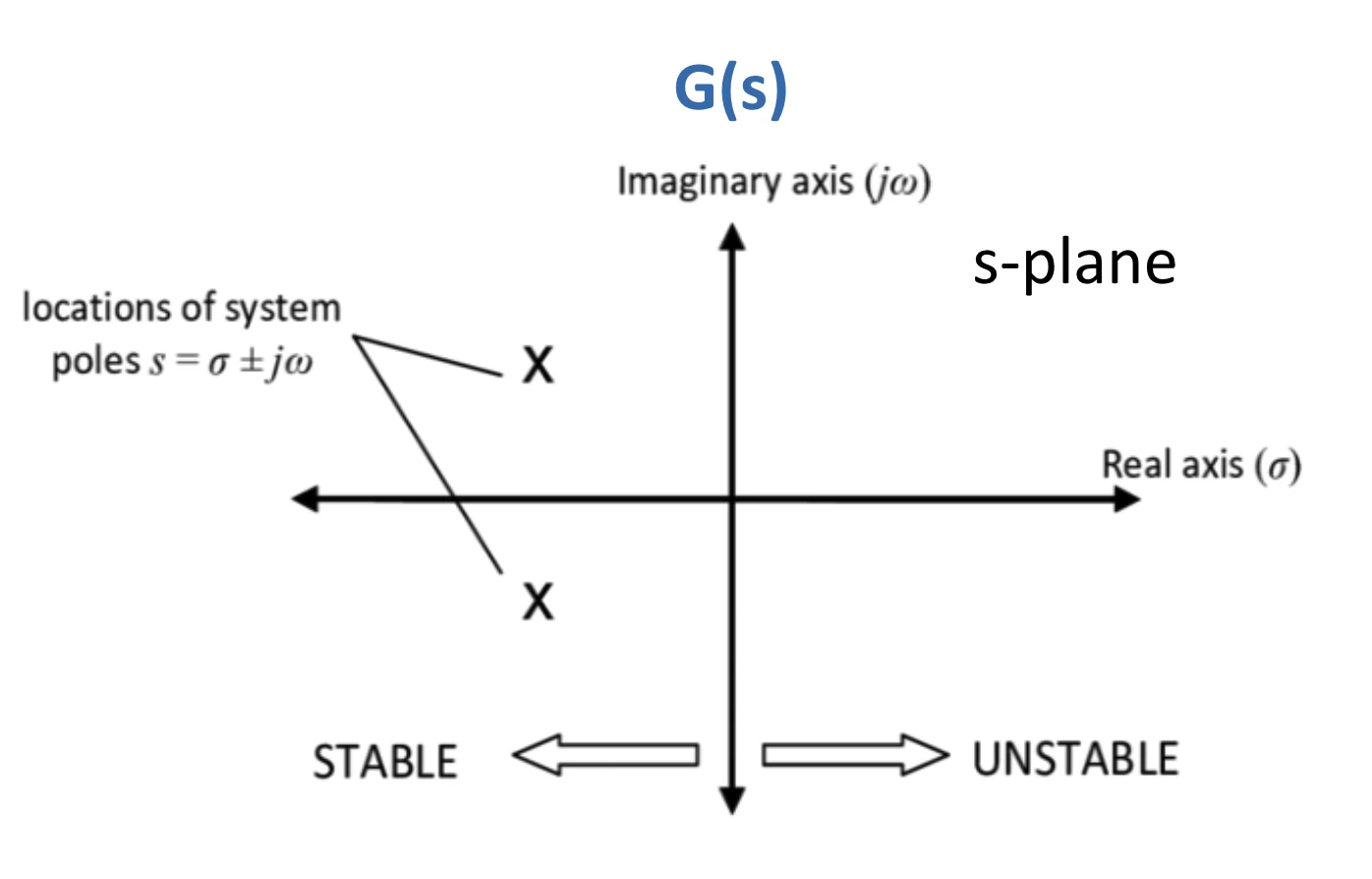Z-transform
reference: examples for z-transform
| Sequence | Transform |
|---|
| δ(k−n) | z−n |
| 1 | z−1z |
| k | (z−1)2z |
| k2 | (z−1)3z(z+1) |
| ak | z−az |
| kak | (z−a)2az |
| sinak | z2−2zcosa+1zsina |
| cosak | z2−2zcosa+1z(z−cosa) |
| aksinbk | z2−2azcosb+a2azsinb |
| akcosbk | z2−2azcosb+a2z2−azcosb |
properties
Linearity: if x(n)=af1(n)+bf2(n) then X(z)=aF1(z)+bF2(z)
Time shifting:
Z[x(t)]x(k−n)x(k+n)=X(z)=z−nX(z)=znX(z)
The idea to convert analog to digital
T is the sampling period, and T1 is the sampling rate in cycles per second
error=2n+1M
where n is number of bits used for digitalisation
resolution of A/D converter
minimum value of the output that can be represented as binary number, or 2nM
sampled data system
reference input r is the sequence of sample values r(kT)
A sampler is a switch that closes every T seconds:
r∗(t)=k=0∑∞r(kT)δ(t−kT)(t>0)
Transfer function of sampled data:
R∗(s)=L(r∗(t))=k=0∑∞r(kT)e−ksT
definition
Let z=esT, we have the following definition:
Z{r(t)}=F(z)=Z(r∗(t))=k=0∑∞r(kT)z−k
zero-order hold
Transfer function of Zero-Order hold
L(u(t)−u(t−T))=s1−sesT
finding the discrete transfer function
G(s)=s3+6s2+8ss2+4s+3
G(s)G(t)G(z)=s3+6s2+8ss2+4s+3=s0.375+s+20.25+s+40.375=L−1(G(s))=0.375+0.25e−2t+0.375e−4t=Z(G(t))=0.375z−1z+0.25z−e−2Tz+0.375z−e−4Tz
G(z)→x(k)
power series
use: when G(z) is expressed as the ratio of two polynomials in z
G(z)=a0+a1z−1+a2z−2+…
partial fraction
For example: G(z)=(z−1)(z−2)z=z−1−z+z−2z=∑k=0∞(−1+2k)z−k
thus, g(kT)=2k−1
stability
| system | pole location criteria on z-plane |
|---|
| Stable | All poles inside unit circle |
| Unstable | Any poles outside unit circle |
| Marginally Stable | One or more poles on unit circle, remaining poles inside unit circle |
 poles on s-plane
poles on s-plane
mapping from s-plane to z-plane
z=eαT(cosωT+jsinωT)
we assume s=α+jω
| Location on s-plane | Value of α | Value of eαT | Mapping on z-plane |
|---|
| Imaginary axis (jω) | α=0 | eαT=1 | On unit circle |
| Right half-plane | α>0 | eαT>1 | Outside unit circle |
| Left half-plane | α<0 | eαT<1 | Inside unit circle |
final value theorem
If limk→∞x(k) exists, then the follow exists:
k→∞limx(k)=z→1lim(z−1)X(z)
- derive open loop function KGHˉ
- Factor numerator and denominator to get open loop zeros and poles
- Plot roots of 1+KGHˉ=0 in z-plane as k varies
GH(z)ˉ=D(z)N(z)
